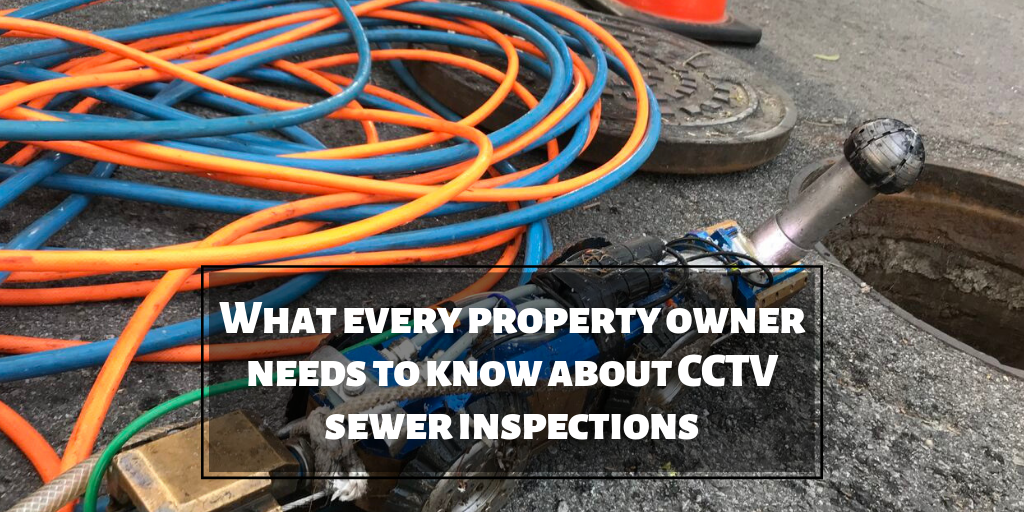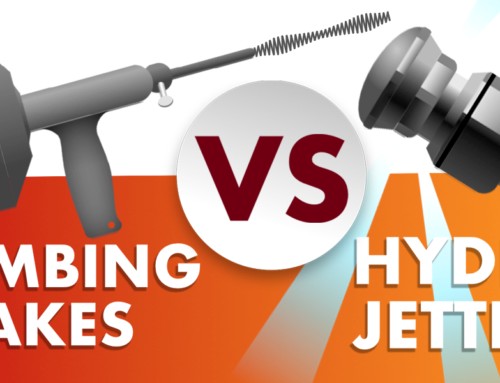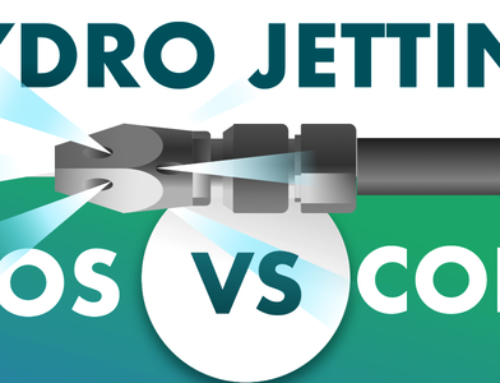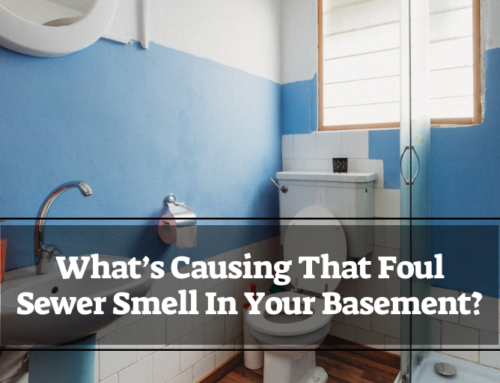If you’re a property owner looking for information about CCTV sewer inspections you’ve come to the right place! We’re going to go over the basics including…
- What are CCTV sewer inspections?
- The equipment used during sewer pipe inspections
- The pipe inspection process
What are CCTV sewer inspections?
If you think there might be something wrong with your drainage pipes the first thing to do is hire a professional to come out and perform what’s called a CCTV inspection. After the contractor does the inspection they will be able to tell you what’s going on inside your pipes and suggest a solution to fix the problem.
The inspection is done using a special remote-controlled CCTV camera to look inside the pipe for cracks, breaks, obstructions, grease build-up, tree roots, accumulated sediment, and areas that have collapsed. The goal of the inspection is to determine the extent of the damage and where it’s located within the pipe.
CCTV sewer inspections are always performed both before and after structural pipe lining, pipe bursting, spray lining or brush coating, and do not require digging. The camera is simply inserted into the pipe via an existing access point.
The equipment used during sewer pipe inspections
Video Monitoring Equipment
CCTV sewer inspections always include real-time video monitoring equipment. The person performing the inspection is situated just outside of the access point and controls the camera remotely while viewing the monitor.
Cable and winch
A reel of reinforced video cable and a winch that allows the operator to lower and retrieve the video inspection equipment.
Camera
The sewer camera is attached to the video monitoring equipment via the long cable attached to the winch. The head of the camera contains lights in order to see every inch of the pipe being inspected.
The pipe inspection process
- The camera is lowered into the pipe
At this point, the camera operator is situated above the access point to your drainage pipe. The sewer camera, which is attached to a cable, is now gently lowered into the pipe. The operator will now start to remotely control the camera in order to move it forward within the pipe. The camera will videotape the entire inside surface of the damaged pipe. When the inspection is done the cable attached to the camera is reversed and the camera is pulled back out.
- Analyzing the video footage taken during the inspection
During the inspection, the operator of the sewer camera will look carefully at the inside of the pipe. Since the inspection is recorded, the contractor will be able to view it later as well.
- Rehabilitating the pipe
The CCTV sewer inspection will tell the contractor two things: the type/extent of the damage and if it’s possible to repair the pipe using trenchless (i.e. no digging) methods. For more information on trenchless sewer repair see How Exactly Does Trenchless Sewer Repair Work?
Let’s go over the main types of trenchless repair…
Structural pipe lining
The contractor may decide that structural pipe lining is the best way to rehabilitate your damaged pipe. It creates a pipe-within-a-pipe. Here’s how that process works…
The contractor will need to first gain access to the pipe. This is usually done via digging a couple of 4ft x 4ft pits. A felt liner that has been soaked in a special epoxy will be inserted into the pipe and then a bladder inside the liner is inflated. As this happens the liner is pushed up against the side of the damaged pipe. After it has been left to cure for a few hours the bladder is removed and your new pipe-within-a-pipe is almost ready for use.
There’s just one more step…
Most pipes have other pipes branching of from them. If there are any branches of the pipe section being repaired via structural pipe lining, the liner will cover them. When this happens, they will need to be opened again or ‘reinstated’. After that’s done, your pipe is now ready for use.
Check out our page (including a video) on structural pipe lining for a more in-depth look at the process.
Pipe bursting
Structural pipe lining creates a pipe-within-a-pipe. That means the damaged pipe needs to have some structural integrity for the process to work. In other words, it’s impossible to line an extremely damaged or collapsed pipe. When the damage is extensive pipe bursting is used to replace the pipe.
Pipe bursting involves digging two holes at either end of the pipe segment being replaced. One hole is the pulling pit and the other is the insertion pit.
The contractor will feed a cable into the pulling pit so that it comes out of the insertion pit. The HDPE replacement pipe is then attached to the cable along with a bursting head and pulled back through the pipe via a winch. During this process, the damaged pipe is broken by the bursting head and the new pipe takes its place.
We have more detailed information about this process on our pipe bursting page.
Spray lining or brush coating
While structural pipe lining involves using a liner to create a new pipe inside your old one, spray lining or brush coating involves spraying(or brushing) a special resin directly onto the inside surface of the damaged pipe.
After the contractor has inspected your pipe for any obstructions or cracks, it will be cleaned to remove any accumulated gunk and then prepared for spray lining or brush coating.
A special nozzle is inserted into the pipe until it reaches the end of the section that needs rehabilitation. It’s then pulled back through the pipe spraying the flexible polymer resin as it goes. After it has been left to cure for a few hours the pipe is as good as new.
One final camera inspection
The final step to any trenchless repair is another CCTV inspection to verify that the job was completed successfully.
We’re Sewer Pros, proudly serving both Los Angeles and Orange Counties as a licensed and insured sewer repair contractor since 2006. Give us a call today at (310) 564-2627 and find out how we can not only save you money but time as well!








Leave A Comment